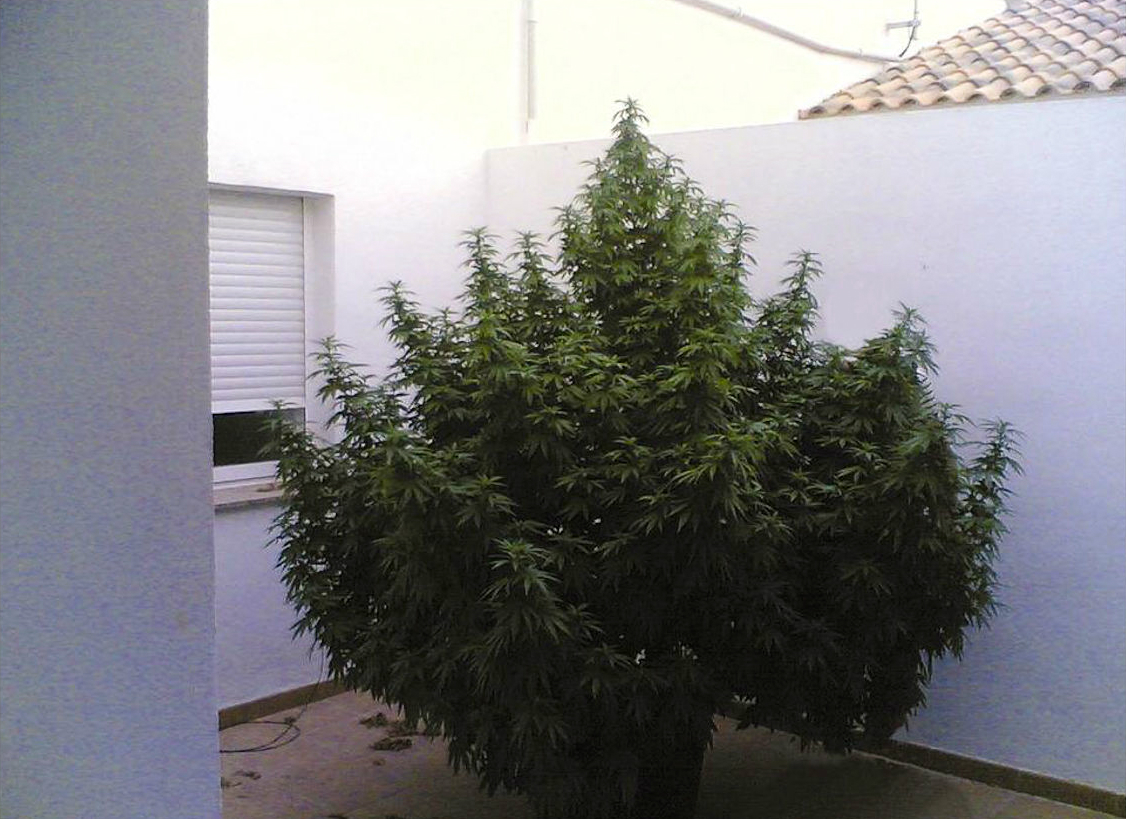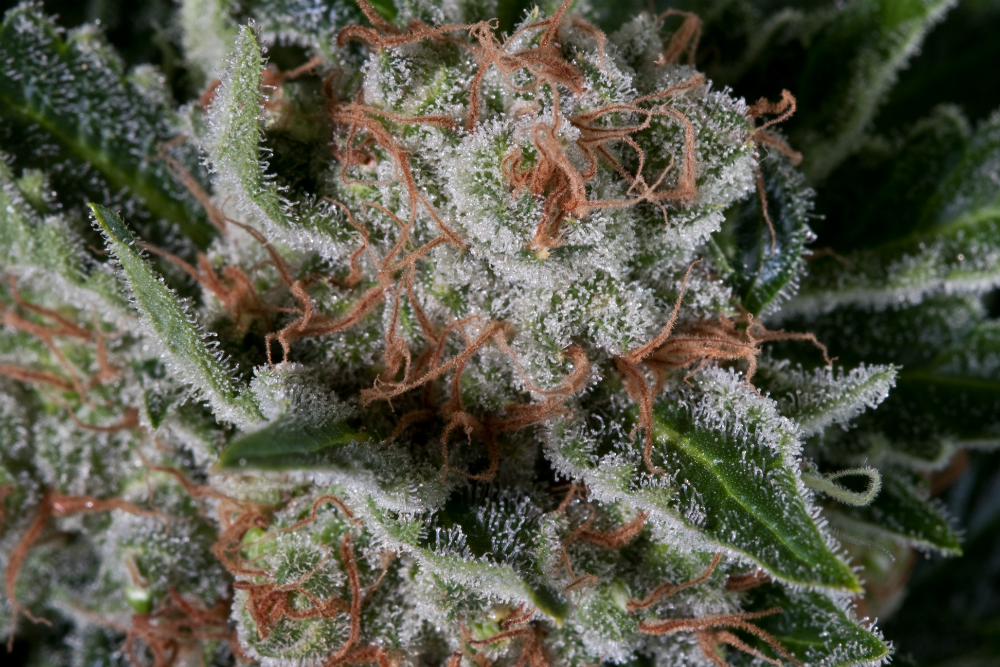- Growing Moby Dick outdoors in a cold, wet climate like the one you find in Northern France is much about having luck on your side — but isn’t that something all outdoor growers depend on?
- In this Grow Report, Ganja Farmer tells us about the growing experience of Jean-François, a grower specialising in outdoor crops who achieved amazing results with Moby Dick.

Planning is key
- Choice of strain: Making a decision when you're browsing the catalogue of a seed bank is not as easy as it sounds. This time, I've chosen the feminised Moby Dick, arenowned champ that combines two features most cannabis growers appreciate: a high content of psychoactive cannabinoids and great yield potential.
- Cultivation site: A plot in the countryside, halfway between Paris and Reims. The area is way too cold and damp for this strain, so probably I'll have to build a makeshift greenhouse for plants shorter that two metres - or at least some sort of shed if the weather gets worse during flowering - and just hope for the best.
- Goals: My annual bud consumption is about 1 kg - 5 kg to be on the safe side in case I have some impromptu party - so a pack of ten feminised seeds should be more than enough. Again, the problem with outdoor growing is that much of it depends on how lucky you are, and if the weather is too adverse - like in 2016, when I only harvested 343 grams - producing a kilo can be a complex undertaking, so this year I'm growing some extra seeds just in case.
Massive plants
- Getting started: This year I get down to work early, on 10 April. I use a germination room which I keep at constant temperature so that the ten seedscan germinate in 72 hours - a 100% germination rate is always a good omen. We had late frost this year, so I keep the seedlings under a Velux cover during the first five weeks and transplant them on 24 May, when day temperatures exceed 20 ºC - two of them I replant in a large 100L pot.
- Growing period: Moby Dickshows its true colours from the get-go: an amazing Sativa that grows fast and vigorously. Considering the location of the crop, I have no choice but to prune the plants to keep them under 3 metres. After pruning the main branches a couple of times, tough, the biggest plant still reaches 2.33 m in height, occupying a space of about 4 m3
As is the case with all vigorous plants, Moby Dick depends largely on the quality of the soil surrounding the roots. The biggest plant, which I've named Lady Marlon, has grown in a bed topped with manure and is now and impressive shrub that should produce over a kilo by itself. The rest of the plants, which have grown in a less favourable yet well fertilised spot, are noticeably shorter. With the same pruning approach - double pruning during the growing period - each of them has developed about twelve branches and has reached 1.80 m in height, looking strong and healthy. As for the potted plants, you can tell Moby Dick doesn't enjoy pots, no matter how big, so the result is not exactly promising: the branches are long and brittle and the canopy is thin, with light green leaves that turn yellow as soon as flowering begins.
On closer examination, I see that the roots of the two unlucky plants are stuck in the pot, so I pull the stems upwards gently to check how deeply rooted they are. I soon realise that they need transplanting, so I dig two big holes and I carefully move the plants to their new site, which I'm sure they will enjoy. The yellowing leaves will soon be gone and the plants will even resume growing, but the four weeks remaining before the beginning of flowering won't be enough for them to produce more than a handful of tiny, slightly substandard buds. - Flowering period: The plants start to produce flower filaments towards the end of June, so I can't tell exactly when flowering begins. Also, seeds that are planted together can flower at different times - within an interval of three weeks - but if flowering starts off right, you can expect things to go smoothly. In my case, the fastest plants start to produce buds on 15 August, with the first trichomes coming out towards the end of the month. These will be ready for harvest on 20 September, but the rest will need three extra weeks at least, if not a month.
Amazing results
- Difficulties encountered: The major challenge was the weather. Sativas are tropical plants that enjoy Mediterranean climates, so northern regions like North Eastern France are too cold and damp, even now that temperatures are rising as a result of global warming. This should not be a problem during the growing period, but flowering is a complete different story.
The best-case scenario would have been a long summer that ensured warm temperatures well into October. This has not been the case, though, and Lady Marlon's stem got damaged during a storm, which required me to cut off a couple of branches and to stake the stem to keep it straight. Another thing that helps in these situations is covering the upper part of the plant with some bamboo sticks tied together in a cone-like shape and securing the branches at two thirds of the plant's height. This allows you to stop the heavy, flower laden branching from swaying in the wind.
- Harvest time: Even if the sun was absent during the last weeks, the buds are heavy, dense and sticky - they even have insects stuck on them - and take nearly two weeks to dry - at a temperature of 15 ºC. Lady Marlon has made it to the end of flowering, producing 988 grams of bud after drying and trimming - because of the damaged branches, it hasn't reached the symbolic 1 kg mark. The next highest yielding plants have produced about 700 and 800 grams each, and the remaining four, about 500 grams. The ones grown in pot, in turn, have yielded about 400 grams of smaller, slightly substandard buds.

- Tasting: I'm of the opinion that weed gives its best when vaporised, and this, of course, applies also to Moby Dick. The vapour is simply amazing, and the intense, full-bodied flavouris like nothing you've tried before. Just 0.3 grams of weed have me vaping for almost 35 minutes and, let's face it, have me lying on the couch for way longer. The effect is potent, highly cerebral and long-lasting, peaking several times before it fades. Accordingly, the strain is best consumed in small doses - i.e. a joint with a small amount of weed or mixed with tobacco.
- Overall conclusions: Moby Dick has performed pretty well considering the season's bad weather, and its weaknesses are simply a consequence of its strengths: sativas are generous, lively strains thatgrow into amazing plants, but they're also extremely greedy and need highly fertile soil. Plus, their massive canopy gets damaged easily during flowering. In return, they're highly resistant to mould, particularly to botrytis. Some of my plants have survived heavy rains which fell during the flowering period, and even if the next morning I could barely bring myself to check on them, they were all in perfect shape - this in spite of the fact that at the end of the flowering period temperatures dropped to 5 ºC at night and barely reached 16 ºC during the day. And yet, after selecting the best buds, I've harvested 2.5 kg. Big up for Moby Dick! Its reputation for excellence is more than deserved.



Comments from our readers
Read comments in other languages:
Did you like this post?
Your opinion about our seeds is very important to us and can help other users a lot (your email address won't be made public).